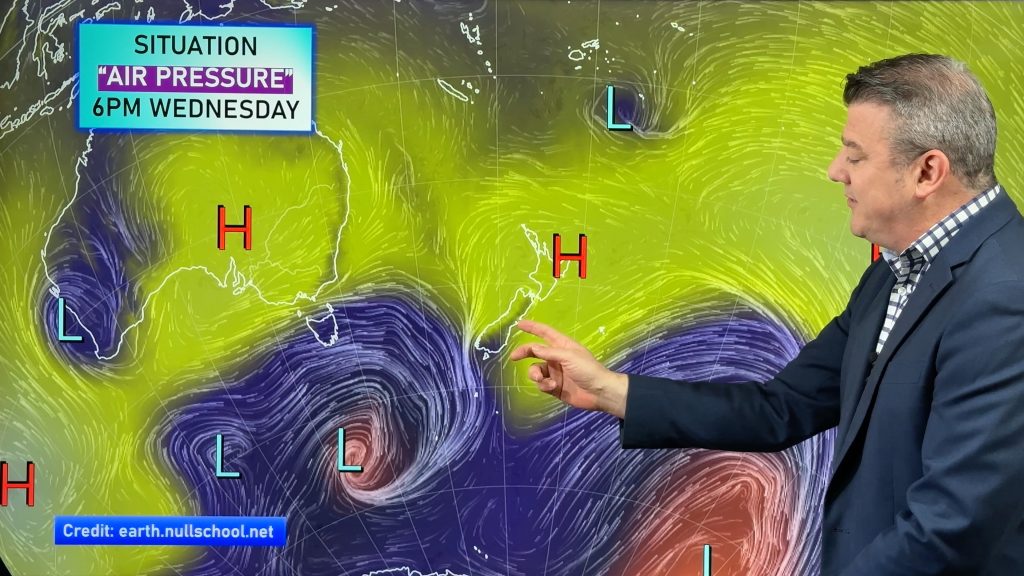
> From the WeatherWatch archives
Western Pacific – Super Typhoon Haiyan is now a dangerous and potentially deadly category 5 storm on the Saffir-Simpson wind scale with winds of 160 mph.
Haiyan should make landfall over Eastern Visayas, specifically in Samar or Leyte on Friday or a little more than 36 hours as a category 4 or 5 storm.
This will be a devastating storm for parts of the central Philippines, and preparations should be rushed to completion.

On the Google Earth image, the orange shaded area is projected for the regions with the greatest potential wind damage.
This will be a catastrophic storm, especially in the region that suffered damage from the last month’s major earthquake.
Travelers, tourist, and Ex-Pats should evacuate the region.
Preparations and evacuations should be completed by Thursday evening as rain and wind will increase across the east-central Philippines Thursday night (local time) with conditions deteriorating from east to west Friday through Friday night as the powerful typhoon crosses the islands.
Residents are urged to take the necessary precautions now ahead of Haiyan’s approach and heed all evacuation orders issued by local officials.
With regards to Koror Island, Palau, (populations roughly 14,000) Haiyan will pass to the north with only tropical storm winds and heavy rains expected within the next 6 hours.
Minor to moderate damage is expected on Palau with coastal flooding and inland flooding being the main threat.
At 1500 UTC, Haiyan was located 87.1 north and 135.4 east or approximately 113 nm east-southeast of Koror, Palau this storm is tracking to the west at 20 mph and is expected to remain on this west-northwest track for the next 72 hours.
Landfall over the central Philippines is expected in a little more than 36 hours.
Maximum sustained winds are at 160 mph with higher gusts making this a category 5 storm on the Saffir-Simpson scale and additional intensification is expected in the next 24 to 48 hours with Haiyan pummeling the central Philippines as a cat 4 or 5 storm.
At this time, typhoon / hurricane strength winds extend out 45 miles while tropical storm strength winds extend out 125 from the center and should remain at this distance when Haiyan passes through the Philippines.

Threats & Damages for the Philippines
As a cat 5 storm, along the path of the strongest typhoon strength winds, a high percentage of framed homes will be destroyed, with total roof failure and wall collapse.
Fallen trees and power poles will isolate residential areas. Power outages will last for weeks to possibly months.
Most of the area will be uninhabitable for weeks or months.
Widespread torrential rain and damaging winds will accompany Haiyan through the central Philippines, threatening to leave a trail of destruction and triggering life-threatening flash floods.
The infrastructure will possibly be heavily damaged on the islands due to the high winds.
Anticipate travel and transportation to be disrupted for several days prior and after the storm.
Rain totals along the path of Haiyan could top 200 mm (8 inches).
Mudslides are a serious concern in the higher terrain, where localized totals of 250 to 300 mm (10 to 12 inches) are expected.
Coastal flooding will also be a major threat along the eastern coast of southern Luzon and Samar islands.as Haiyan will produce a severe and inundating storm surge.
Flooding is still expected for the Manila metro even though the worst of the storm will bypass the capital city, with heavy rainfall of 100 to 200 mm (4 to 8 inches) are still expected.
After the Philippines, Vietnam is the next stop.
After slamming the Philippines, Haiyan will remain a dangerous typhoon, though it will be on weakening trend as it emerges into the South China Sea and continues to move to the west-northwest on Saturday.
The eventual track of Haiyan will bring the storm toward central Vietnam by late Sunday into Monday with possible landfall near Da Nang, which also suffered damage from a previous tropical storm a few weeks ago.
– Pictures: Matthew Swinden
– CNN Developing story
Comments
Before you add a new comment, take note this story was published on 7 Nov 2013.





Add new comment